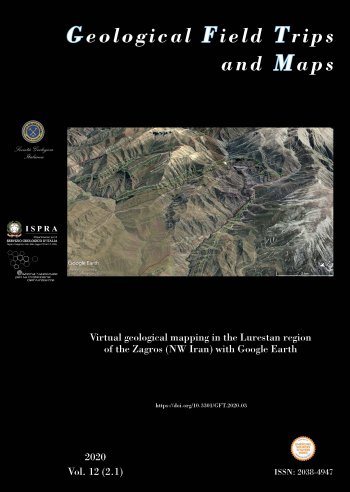
Volume 12 (2.1)/2020
Virtual geological mapping in the Lurestan region of the Zagros (NW Iran) with Google Earth
DOI: https://doi.org/10.3301/GFT.2020.03 - Pages: 1-11
Stefano Tavani (1), Amerigo Corradetti (2), Francesco Vinci (3), Mariano Parente (1), Stefano Mazzoli (4), Davoud Morsalnejad (5) & Alessandro Iannace (1)
(1) DISTAR, Università degli Studi di Napoli Federico II, Naples, Italy.
(2) Department of Petroleum Engineering, Texas A&M University at Qatar, Doha, Qatar.
(3) PanTerra Geoconsultants B.V., Leiderdorp, the Netherlands.
(4) School of Science and Technology, Geology Division, University of Camerino, Italy.
(5) N.I.O.C., Tehran, Iran.
Corresponding Author e-mail address: stefano.tavani@unina.it
(2) Department of Petroleum Engineering, Texas A&M University at Qatar, Doha, Qatar.
(3) PanTerra Geoconsultants B.V., Leiderdorp, the Netherlands.
(4) School of Science and Technology, Geology Division, University of Camerino, Italy.
(5) N.I.O.C., Tehran, Iran.
Corresponding Author e-mail address: stefano.tavani@unina.it
Abstract
In this work, we present a Google Earth (GE) based virtual field mapping exercise, designed for master's and bachelor's students of geology and aimed at supporting or replacing field mapping training courses. The exercise consists of mapping geological limits and faults in a poorly vegetated area of the Lurestan region (Zagros thrust and fold belt). The occurrence of cliff- forming and recessive formations allows students to recognise directly on GE the first order geological structures of the area, which include faults and folds with wavelengths of many kilometers. The provided input data includes a stratigraphic description of the exposed formations, field photographs, and a set of field checkpoints. The material can be provided entirely or partly, depending on the students' level and workload required. The full dataset is intended for undergraduate students with little or no field experience, while master students are expected to complete the exercise with limited input data. Additionally, the exercise can be limited/focused on sub-areas or extended on the entire area.
This virtual mapping exercise is expected to empower students' ability to visualize, understand and reconstruct 3D geological surfaces; providing an essential tool for future scholars and practitioners.
Keywords
